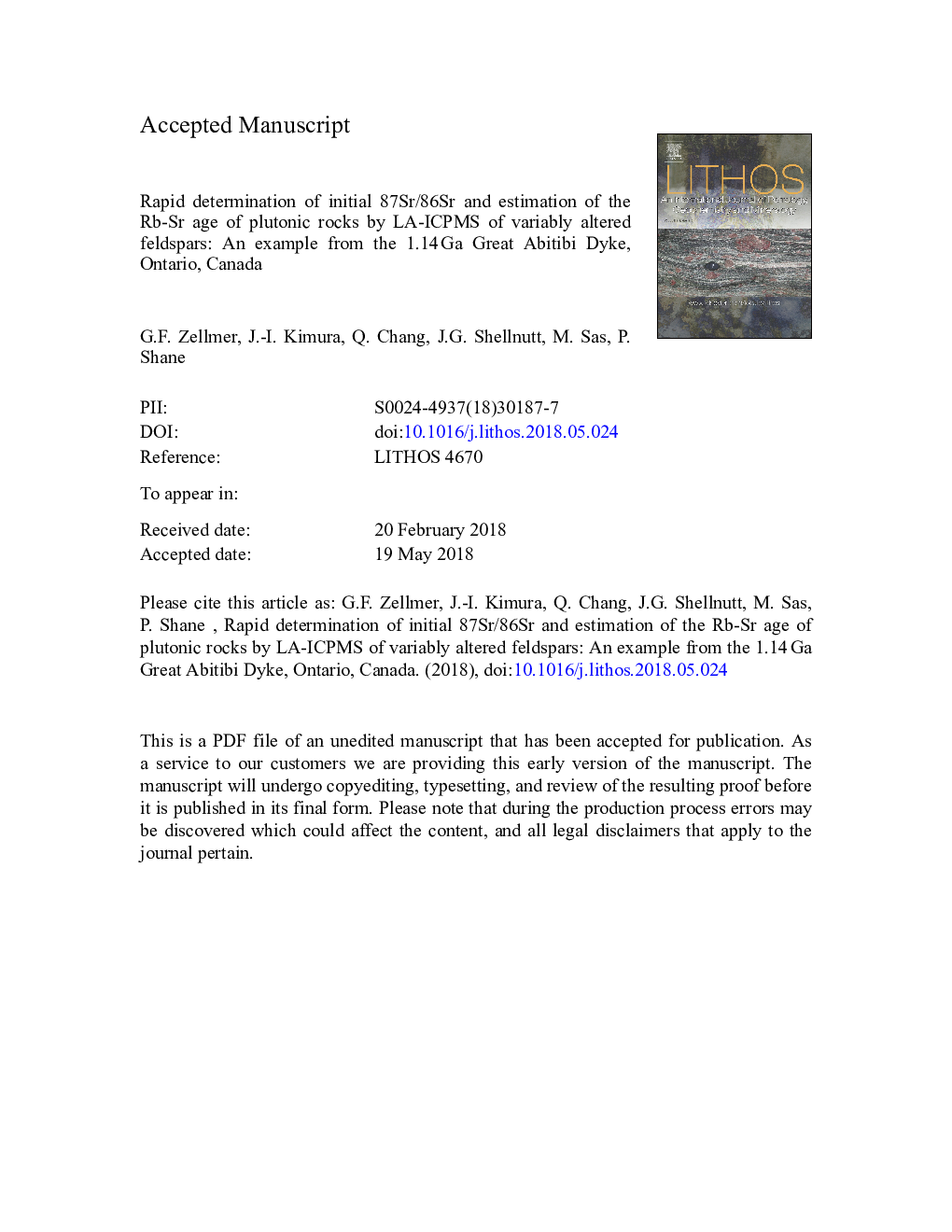| Article ID | Journal | Published Year | Pages | File Type |
|---|---|---|---|---|
| 8911538 | Lithos | 2018 | 26 Pages |
Abstract
Sr isotope analysis of plutonic rocks is an important method for deriving the provenance and age of ancient magmatic episodes, and the petrogenetic processes operating during intrusive activity. We determined the 87Sr/86Sr isotopic compositions of fresh and variably altered feldspars from the 1.14â¯Ga gabbroic Great Abitibi Dyke, Ontario, Canada, through the use of Laser Ablation Inductively-Coupled Plasma Mass Spectrometry (LA-ICPMS). The data show an alteration trend between fresh, low-Rb plagioclase with 87Sr/86Sr ratios of 0.7045 and high-Rb alkali feldspar with 87Sr/86Sr ratios of 0.7059, which may be used to constrain the 87Sr/86Sr ratio of the mantle source. This trend is incompatible with simple mixing and instead has age significance. As post-intrusive alteration through hydrothermal circulation starts immediately following emplacement, LA-ICPMS analysis allows rapid estimation of initial 87Sr/86Sr ratios and intrusive age, suitable for sample screening and selection for more precise dating. For the Great Abitibi Dyke, the Rb-Sr age estimate of emplacement of 1.10â¯Â±â¯0.23â¯Ga (2Ï) is concordant with the precise U-Pb emplacement age of the dyke (1140.6â¯Â±â¯2.0â¯Ma). The most altered high-Rb alkali feldspars return younger ages, suggesting that post-intrusive alteration lasted several hundred million years. This study highlights the need for microanalysis to differentiate between alteration and magmatic processes on basis of Sr isotopic signatures, and outlines a rapid method to determine initial 87Sr/86Sr ratios and to estimate Rb-Sr ages of plutonic rocks in terranes with long histories of multiple intrusive magmatic episodes.
Related Topics
Physical Sciences and Engineering
Earth and Planetary Sciences
Geochemistry and Petrology
Authors
G.F. Zellmer, J.-I. Kimura, Q. Chang, J.G. Shellnutt, M. Sas, P. Shane,
